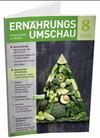饮食保健的过程模型:欧洲模式的比较
IF 0.3
4区 医学
Q4 NUTRITION & DIETETICS
引用次数: 9
摘要
使用饮食保健过程(DCP)可以改善循证指南和批判性思维在营养学中的应用。改善营养教育和能力项目(IMPECD)的目标之一是为国际教育目的制定统一的饮食习惯指南。因此,需要对欧洲的发展中国家方案进行比较。在2017年6月至10月期间,对代表EFAD(欧洲营养师协会联合会)全部成员国的专家进行了简明的文献检索和半结构化访谈。在23个EFAD成员国中,有16个回应(70%),其中13个表示使用DCP。八个不同的dcp,有四至六个核心步骤和三个图形表示。在一个国家,法律规定了饮食过程的使用。由于它们遵循相同的原则,因此dcp的相似点多于不同点。语言或形式的差异不应限制在饮食实践方面加强合作和国际交流。这些结果为开发统一的教育用DCP提供了良好的基础。本文章由计算机程序翻译,如有差异,请以英文原文为准。
Process models in dietetic care: a comparison between models in Europe
Using a Dietetic Care Process (DCP) can lead to improved application of evidence-based guidelines and critical thinking in dietetics. One aim of the project Improvement of Education and Competences in Dietetics (IMPECD) is to develop a unified DCP for international educational purposes. Therefore, a comparison of European DCPs was needed.A concise literature search and semi-structured interviews with experts representing the full EFAD (European Federation of the Associations of Dietitians) member states were conducted from June to October 2017.16 out of 23 EFAD member states responded (70%) from which 13 indicated to use a DCP. Eight different DCPs were found, with four to six core steps and three graphical representations. In one country the use of a dietetic process is indicated by law. The DCPs have more similarities than differences as they follow the same principles. Differences in language or form may not limit the improvement in collaboration and international exchange in dietetic practice. These results provide a good basis for the development of a unified DCP for educational purposes.
求助全文
通过发布文献求助,成功后即可免费获取论文全文。
去求助
来源期刊

Ernahrungs Umschau
医学-营养学
CiteScore
0.50
自引率
40.00%
发文量
0
审稿时长
>12 weeks
期刊介绍:
The ERNÄHRUNGS UMSCHAU publishes reviews and original articles on the whole area of nutrition science, including nutrition behavior, nutrition economics, public health nutrition, nutritional medicine and other areas of importance for human nutrition.
 求助内容:
求助内容: 应助结果提醒方式:
应助结果提醒方式:


